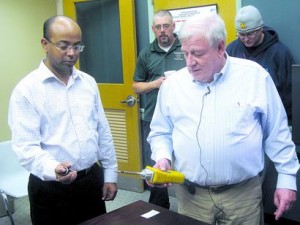Air Quality Monitoring Near Marcellus Well Pads
Exerpted from an article in the Wheeling Intelligencer by Tyler Reynard, December 10th
WHEELING, WV. West Virginia University and the Wheeling-Ohio County Health Department are gathering data to determine if drilling for natural gas impacts the local air quality.
“We want to eventually be able to look at whether there are health effects that are associated with living near a Marcellus (Shale) gas drilling site while it’s in operation,” said Michael McCawley, chairman of the West Virginia University School of Public Health.
In numerous legal advertisements over the past year, driller Chesapeake Energy confirmed the company has the “potential to discharge” various amounts of the following materials – both from its well sites and from the compressor stations at Battle Run and Sand Hill – into the Ohio County air: carbon dioxide, carbon monoxide, methane, formaldehyde and nitrogen oxides.
For their study, officials are relying on photoionization detectors, which monitor organic compounds in the air. Some people residing near well pads in Ohio County have volunteered to participate in the study by allowing the instruments to be placed on their property. The detectors are already in place at a few sites in the county, and organizers will soon add a few more. The equipment will be moved to different locations throughout the county over the next six months to ensure the results are comprehensive.
McCawley said the process of selecting where to place the instruments was a “complex issue.” Study organizers considered wind direction and topography, and sought locations with a clear path between the measurement instruments and active well sites.
The instruments would also assist natural gas companies in monitoring any emissions being produced from their well sites, McCawley pointed out. He added that local companies have been very cooperative with the initial phases of the study.
NOTE: The original article includes a photograph of Somu Chatterjee, of the Wheeling-Ohio County Health Department and Michael McCawley of West Virginia University as they test a photoionization detector.

